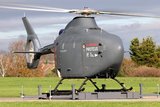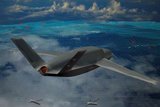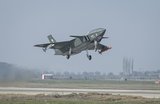Brazilian Air Force conducts first live fire of Meteor missile from Gripen E
The major milestone for the beyond-visual-range air-to-air missile was conducted in November and expands the capabilities of the air force’s growing Gripen E fleet.
The missiles that decide the outcome of conflicts are powered by rocket motors. The more active the conflict, the more rocket motors are needed. (Photo: Lockheed Martin)
Lockheed Martin and General Dynamics have signed a strategic teaming agreement for the production of solid rocket motors. The move is aimed at securing a domestic supply chain for the motors that, for instance, fire missiles at their targets.
Such strategic collaborations look to be an emerging defence trend in 2024, following Raytheon’s signing of a deal with Avio in July for the same fundamental purposes. Raytheon justified the collaboration with the logic that more of its rocket motors were being used than had been usual in Ukraine, powering its Advanced Medium-Range Air-to-Air Missile (AMRAAM) and AIM-9X AAM missiles, as the resistance to the Russian invasion continued.
The rationale from Lockheed Martin is similar.
Defence business booms and order books build on the back of Russia–Ukraine war
Israel cleared for $20 billion in arms packages
“This agreement enables Lockheed Martin and General Dynamics to ramp production of in-demand solutions more quickly going forward,” said Tim Cahill, president of Lockheed Martin Missiles and Fire Control. “Maintaining a robust and diverse supply chain for solid rocket motors is critical to advancing our vision for a stronger, more resilient defence industrial base.”
The work of the collaborating companies will initially focus on the production of rocket motors for the Guided Multiple Launch Rocket System (GMLRS) at the General Dynamics facility in Camden, Arkansas, beginning in 2025. Lockheed Martin said the initial collaboration would be followed by a phased planning approach to transition to other products.

The major milestone for the beyond-visual-range air-to-air missile was conducted in November and expands the capabilities of the air force’s growing Gripen E fleet.

Engine technology has been thrust into the spotlight ahead of Russian President Vladimir Putin’s visit to India this week, with the Su-57, S-400 and Kamov-226 expected to be high on the agenda.

The technology demonstrator forms part of a wider effort to help the Royal Navy explore the potential of uncrewed systems supporting its existing crewed aviation platforms.

The MQ-7C uncrewed aircraft is currently undergoing further internal flight tests ahead of a government test event anticipated for next year.

In November 2025, GA-ASI unveiled a new Gambit variant, the Gambit 6, and appears to be pitching the aircraft series to various customers in the Middle East, which is a fast-emerging CCA market. The Dubai Airshow also saw the unveiling of various Emirati aircraft from Edge Group.

This test is the latest milestone achieved by the indigenous drone, destroying a target using a beyond-visual-range missile.